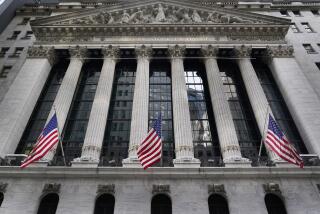No Change to NYSE ‘Circuit Breakers’
The New York Stock Exchange, in its quarterly setting of “circuit breakers” designed to avert a market meltdown, left the level of decline that would trigger a temporary trading halt in U.S. equity markets unchanged.
Circuit breakers are tied to drops in the Dow Jones industrial average. The point levels for tripping them are set quarterly by using the average closing level of the Dow for the previous month, rounded to the nearest 50 points.
A 1,050-point drop in the Dow would halt trading for one hour if the decline occurs before 11 a.m. Pacific time, and for 30 minutes between 11 and 11:30 a.m. Such a drop would not trigger a halt after 11:30 a.m.
A 2,150-point drop would halt trading for two hours if the decline occurs before 10 a.m., and for one hour if between 10 and 11 a.m. Trading would be halted for the remainder of the day if a 2,150-point drop takes place after 11 a.m.
A 3,200-point Dow drop would halt trading for the remainder of the day, regardless of when it occurs.
Circuit breakers have been triggered only once, on Oct. 27, 1997, when the Dow industrials fell 350 points at 11:35 a.m. and 550 points at 12:30 p.m.
More to Read
Inside the business of entertainment
The Wide Shot brings you news, analysis and insights on everything from streaming wars to production — and what it all means for the future.
You may occasionally receive promotional content from the Los Angeles Times.










